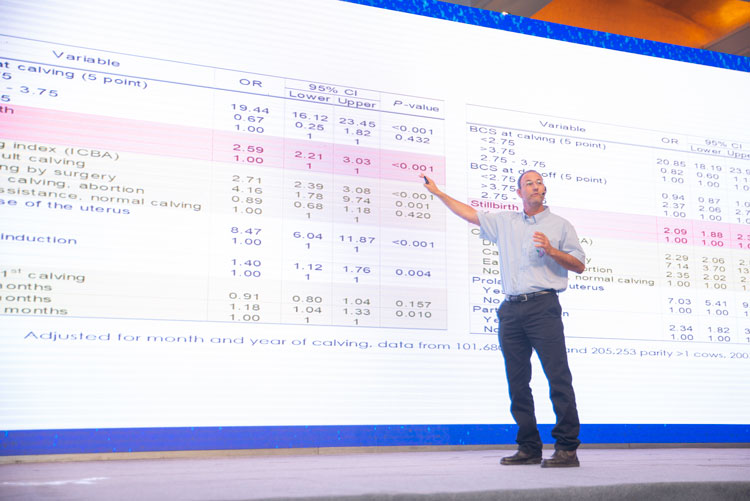
“When a cow in the first parity gives birth to a stillborn calf, that animal is three times more likely to leave the herd in the first 14 days immediately after calving,” said Michael van Straten to those attending the First International Conference of Calf and Heifer held in Baoding, Hebei, China.
Van Straten made that assessment based on evaluating over 300,000 calving records from more than 150 Israeli dairy farms. “This is the most expensive time for a cow to leave the herd,” said the veterinarian.
The danger of delivering a stillborn calf also impacts older cows in the second parity or later.
“Those cows are 2.3 times more likely to leave the herd in the first 14 days after calving,” said van Straten, who works for Hachaklait, which is a mutual society established in 1919 that provides veterinary service to over 80 percent of all dairy farms in Israel. That makes the data set on cows that calved recently among the most robust in the world because the group’s 47 veterinarians gather the data.
In addition to being at a much higher risk of becoming an early cull cow, those cows that survive giving birth to a stillborn calf give less milk in the ensuing lactation.
Findings have deep meaning
Some readers might be saying, “The findings are obvious because cows delivering stillborn calves have more metritis and other related health issues.” Van Straten would agree with that assessment.
That is why van Straten adjusted for other variables such as calving diseases, body condition score (BCS) at calving, age at calving (parity), and calving ease index. Even with these adjustments in the data, first-calf cows were three times more likely to leave the herd if those animals delivered a stillborn calf.
All hands on deck
“Every staff member on a farm must know the signs of calving,” continued van Straten, who also is a lecturer at the Hebrew University of Jerusalem.
“Even if they are not in charge of delivering calves, they can alert someone with expertise. We hold calving workshops to stimulate knowledge among employees on the farm. When employees know why they are doing something, they are more likely to carry out the task,” said van Straten.
“Calf jacks also tell us a story about calving,” said the veterinarian. “Is the calf jack cleaned and disinfected, waiting to deliver the next calf?” That’s likely a sign of a farm that makes calving and handling the maternity area a priority.
“On the flip side, is the calf jack on the floor or dirty?” he asked the Chinese audience. “That’s a sign of greater problems on the farm,” said van Straten, who has over 20 years experience working with dairy farmers.








